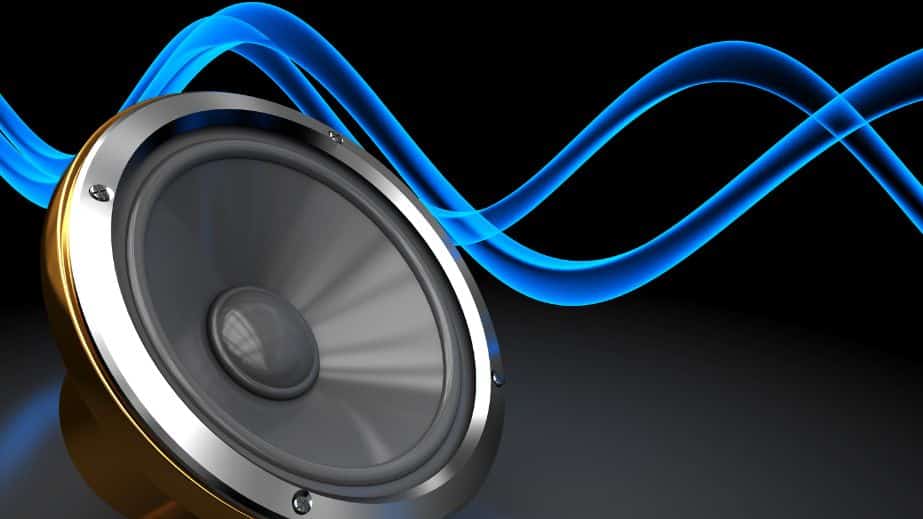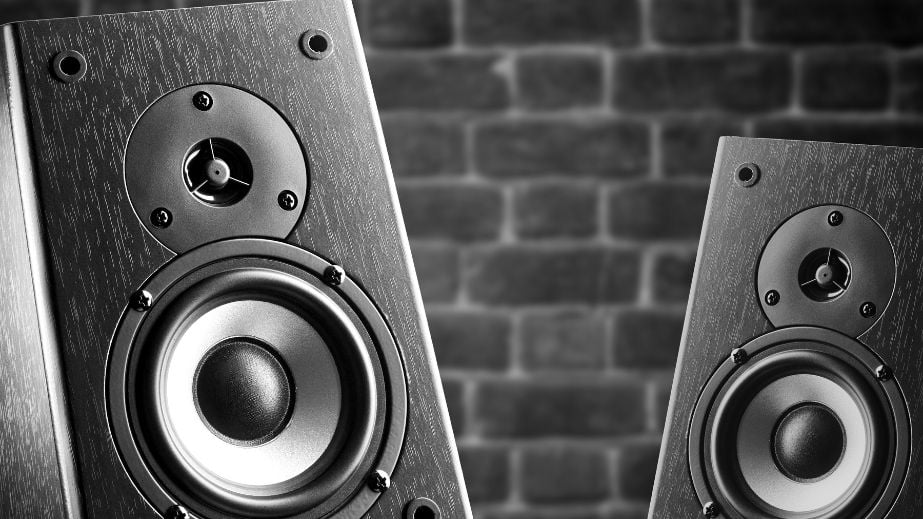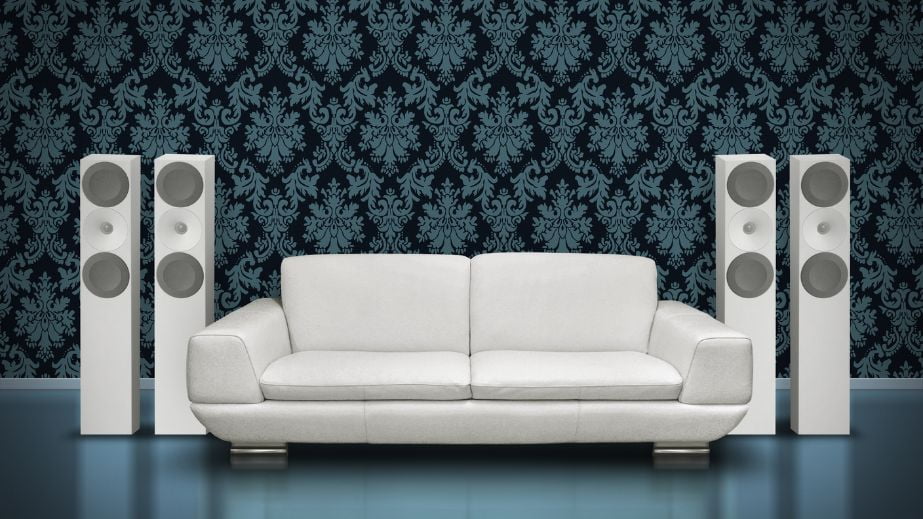Immersive soundscapes have the power to transform ordinary home theater experiences into breathtaking journeys through audio. At the core of this immersive experience is the science behind multi-channel home theater systems, which use multiple speakers and synchronized audio channels to mimic true surround sound, enveloping the listener in a lifelike aural environment.
By understanding the key principles and technologies behind multi-channel home theaters, audiophiles, and movie enthusiasts alike can unlock the full potential of immersive sound.
One of the fundamental elements of creating immersive soundscapes is the use of multi-channel audio, which consists of multiple individual audio streams mixed together to create a cohesive, spatially-aware sound environment. Various technologies for spatial audio, such as binaural audio and loudspeaker design, play a critical role in achieving this effect.
By expertly combining these concepts with the right receivers and multi-channel mixing techniques, a well-designed home theater system can provide stunning audio that transports the listener to a whole new world of sound.
Key Takeaways
- Multi-channel home theater systems are the key to creating immersive soundscapes.
- Spatial audio technologies, such as binaural audio and loudspeaker placement, contribute to the effectiveness of immersive sound.
- A properly set up receiver and multi-channel mixing are essential for building an optimal soundscape in a home theater environment.
Fundamentals of Immersive Soundscapes

Historical Development
The concept of immersive soundscapes has roots in surround sound systems. Surround sound became popular in the 1970s and 1980s as a way to deliver a more immersive audio experience for movie theaters and home systems.
Advances in technology have led to the creation of multi-channel home theaters, significantly enhancing the audio experience for movies, video games, and other forms of entertainment. These systems provide an unmatched cinematic experience from the comfort of your living room 1.
Principles of Sound
A key component of immersive soundscapes is the use of multi-channel audio, which employs multiple speakers placed around the listening environment. This arrangement helps create a three-dimensional (3D) sound field, making it feel as if sounds are coming from different directions and distances. One technology that has emerged for this purpose is object-based audio2.
Physics and psychoacoustics play a significant role in the development of immersive soundscapes. Physics helps us understand how sound waves propagate through a space and how they interact with the environment and listener.
Psychoacoustics, on the other hand, is the study of how humans perceive and process sound, which is crucial in designing audio systems that deliver an authentic and convincing experience3.
Innovative audio systems can be quite complex, but understanding the basics of immersive soundscapes can help you appreciate the fascinating science behind the technology. This knowledge can also assist in selecting the right multi-channel home theater system for your needs, providing an enhanced and immersive audio experience.
Multi-Channel Audio and Its Applications

Home Theaters
Multi-channel audio systems, such as multi-channel home theaters, create an immersive sound experience by utilizing multiple speakers and a subwoofer. This setup allows for diverse audio sources and channels, producing a more lifelike sound field. As a result, audiences can enjoy a genuine cinematic experience while watching movies, TV shows, and other content right in their living room.
Virtual and Augmented Reality
In the world of virtual and augmented reality, spatial audio plays a vital role in crafting an immersive experience. By incorporating binaural and multi-channel audio techniques, VR and AR applications can generate realistic acoustic environments, which help users feel more connected to the virtual world.
This technology has contributed significantly to developing cutting-edge gaming experiences, enhancing player engagement and creating a more authentic sense of presence within the game environment.
3D Space in Various Industries
Aside from home theaters and virtual reality, multi-channel audio is also finding its way into various industries. For instance, multi-channel audio in film sound helps create soundscapes that elevate the viewer’s experience and deepen the emotional impact.
Meanwhile, music production and post-production processes benefit from multi-channel audio by providing more precise control over sound elements, resulting in richer and more immersive listening experiences.
In conclusion, the science behind multi-channel audio is reshaping how we experience sound in various fields, from home entertainment to immersive virtual environments. As technology advances, we can expect even more innovative multi-channel and spatial audio applications, further enhancing our immersive experiences with sound.
Technologies for Spatial Audio

Approaches to Soundfield
There are several approaches to creating immersive soundscapes for multi-channel home theaters. Two of the most notable techniques are Ambisonics and Wavefield Synthesis.
Ambisonics is a full-sphere surround sound technique that aims to accurately recreate a sound field. It captures and reproduces sound sources’ directional and spatial characteristics, offering an immersive audio experience.
On the other hand, Wavefield Synthesis is a spatial audio reproduction technique that focuses on reconstructing the original sound field. It uses an array of loudspeakers to recreate the sound waves, resulting in an accurate and realistic listening experience.
Creation and Connection of Audio Signals
Creating immersive soundscapes in multi-channel home theaters often involves using multi-channel mixing techniques. These techniques enable sound engineers to manipulate and mix multiple audio signals to create a more immersive and engaging listening experience.
One popular format is Dolby Atmos, which adds height channels to traditional surround sound systems, enabling sounds to be placed more accurately within the 3D space. This technology is now widely used in modern movie theaters and home theater setups.
state-of-the-art spatial audio recording techniques are also used to capture sound’s spatial characteristics. Devices like binaural microphones can record directional and ambient cues, which can then be mixed and manipulated to create an immersive 3D audio experience for playback.
Room Configuration and Requirements
The design and configuration of the room itself play a crucial role in creating immersive soundscapes for multi-channel home theaters. Room size, shape, and acoustics directly affect the listening experience. To achieve optimal results, it’s essential to consider the following aspects:
- Room size: The size of the room is directly related to the optimal placement and quantity of speakers. Larger rooms require a more extensive array of speakers to create a well-distributed sound field. Conversely, smaller rooms can achieve immersive audio with fewer speakers.
- Receiver: The receiver is a crucial component in multi-channel home theater setups, as it decodes and distributes the audio signals to the speakers. Higher-quality receivers can better handle complex audio signals, resulting in improved spatial sound reproduction.
- Room acoustics: The room’s acoustic properties can drastically impact the listening experience. Sound can bounce off hard surfaces, causing distortion or unwanted reflections. Ensuring proper acoustic treatment, such as using absorptive materials and diffusers, can significantly improve audio quality.
By taking these factors into account, you can create an immersive soundscape that transports the listener into the virtual world of multi-channel home theaters.
Binaural Audio

Binaural audio is a recording and reproduction technique that creates an immersive sound experience, closely replicating the way humans perceive sound in real life. It relies on Head-Related Transfer Functions (HRTFs), which account for the acoustic properties of an individual’s head, ears, and torso.
This section will cover the following sub-topics: Binaural Sound Capture, Headphone Reproduction, Binaural Synthesis, and Quality Assessment.
Binaural Sound Capture
Binaural sound capture is the process of recording audio using two microphones placed at the approximate location of a listener’s ears, often done with the help of a dummy head model. The aim is to capture the subtle differences in sound reaching each ear, including differences in path length, reflections, and other acoustic effects.
This creates an audio recording that replicates the natural spatial cues our brain uses to localize sounds in a three-dimensional space, resulting in a more immersive listening experience.
Headphone Reproduction
Headphone reproduction of binaural audio is essential for maintaining the spatial information captured during the recording process. By using headphones, each ear receives the exact audio signal intended for it without any cross-talk or interference from the other ear’s signal.
This allows the listener’s brain to process the spatial cues embedded in the binaural recording, creating a virtual acoustic environment that closely resembles the original sound scene.
Binaural Synthesis
Binaural synthesis refers to the process of artificially creating binaural audio through the use of digital signal processing techniques and HRTFs. By applying HRTFs to a monophonic or stereophonic audio signal, it is possible to create a virtual acoustic environment that simulates the spatial characteristics of various sound sources.
This approach allows for greater control over the spatial audio experience, including the placement and movement of sound sources within the virtual environment.
Quality Assessment
Assessing the quality of binaural audio involves evaluating both the recording and reproduction processes. Factors such as microphone placement, dummy head model characteristics, HRTF accuracy, and headphone quality can all influence the listener’s perception of the spatial audio experience.
Objective metrics, such as measuring interaural time and level differences, can be used to evaluate the technical aspects of binaural audio. Subjective evaluations, like listener preference and spatial localization accuracy, can also provide insight into the overall success of the binaural audio system in creating realistic and immersive soundscapes.
Loudspeakers and Channel Placement

In a multi-channel home theater system, the arrangement and placement of loudspeakers play a critical role in creating immersive soundscapes. Depending on the system’s configuration, a combination of front, center, and surround speakers, subwoofers, and height channels are used to achieve a cohesive sound field.
Front, Center, and Surround Speakers
Front speakers, consisting of left and right channels, are typically positioned on either side of the TV or projection screen, forming an equilateral triangle with the listener’s head. The center channel speaker, which handles dialogue and on-screen action, is placed directly above or below the screen to ensure clear and intelligible audio. To set up your new center channel speaker for optimal performance, consider some factors and tips.
Surround speakers, such as left and right surround channels, are intended to envelop the listener and enhance the entertainment experience. They are usually placed at the sides or behind the listening position, slightly above ear level.
Additional loudspeakers can be installed for systems with more audio channels to create an even more immersive sound field, such as 5.1 or 7.1 configurations.
Subwoofers and Height Channels
Subwoofers are responsible for reproducing low-frequency sounds, adding depth and realism to the audio experience. A dedicated low-frequency effects (LFE) channel in multi-channel systems drives the subwoofer.
The optimal placement of subwoofers depends on room characteristics, but common practice is to position them in the room’s front corners, which can accentuate bass response.
Height channels add a sense of verticality to the sound field, allowing sound to emanate from above the listener. This can be achieved using ceiling-mounted speakers or upward-firing modules integrated into floor-standing loudspeakers.
Alternatively, soundbars with built-in height channel capabilities can be used to simulate an immersive vertical audio experience without requiring additional speakers.
Creating an immersive soundscape in a multi-channel home theater system involves careful planning and execution of loudspeaker and channel placements. By achieving a balanced, well-calibrated audio setup, you can transport your listeners into an engaging and immersive world of sound.
Receivers and Multi-Channel Mixing

AV Receivers
AV receivers are the central component of a home theater system, responsible for receiving, decoding, and amplifying audio signals. They manage multiple audio inputs and outputs, connecting devices like speakers, media players, and gaming consoles to create a seamless experience.
Most modern AV receivers support multi-channel audio, allowing them to handle various formats like Dolby Digital, DTS, and object-based codecs such as Dolby Atmos or DTS. This enables the creation of immersive soundscapes that mimic the experience of being in a cinema or concert hall.
Some key features to consider when selecting an AV receiver include the supported audio formats, the number of input/output connections, and any additional functionality, such as built-in Wi-Fi, Bluetooth, or support for popular streaming services.
Multi-Channel Mixing Techniques
Multi-channel mixing techniques are employed to create a more enveloping sound experience using multiple speakers in a surround sound setup. In contrast to traditional stereo systems that use two channels (left and right), multi-channel mixing can utilize a minimum of three channels: left, center, and right.
However, more advanced systems may include additional channels, such as side and rear speakers, as well as height speakers for advanced codecs like Dolby Atmos. Some common multi-channel arrays are:
- 5.1 surround sound: Consists of five speakers (front left, center, front right, surround left, and surround right) along with a subwoofer to handle low-frequency effects.
- 7.1 surround sound: Builds upon a 5.1 setup by adding two extra rear surround speakers for increased immersion.
- 9.1 and higher: Advanced systems introduce height speakers, additional side speakers, or specialized speaker placement based on the specific audio format.
Stereo Enhancement and Audio Imaging
While multi-channel systems provide significant immersion, certain techniques can be used to enhance stereo imaging and improve the overall audio experience in home theaters. These approaches involve elements like speaker positioning, equalization settings, and digital signal processing algorithms.
One example of stereo enhancement is the phantom center channel, which involves carefully positioning left and right speakers to create the illusion of a center channel, often used in smaller home theater setups. Another effective technique to enhance audio imaging is using digital signal processing algorithms like Virtual Surround or Dolby Headphone. These can create the sensation of a multi-speaker environment while using only a stereo system or headphones.
In conclusion, AV receivers and multi-channel mixing play vital roles in creating immersive soundscapes for home theater experiences. By considering factors like supported audio formats, input/output connections, and appropriate mixing techniques, you can optimize your home theater experience for maximum enjoyment.
Remember that investing in a suitable AV receiver with the right features and utilizing stereo enhancement techniques can greatly enhance the overall listening experience.
Building Immersive Soundscapes

Capturing Audio Objects
Immersive soundscapes are created through a combination of techniques and technologies, including 3D sound recording and spatial representation. One crucial aspect of building immersive soundscapes involves the capture of audio objects.
This process relies on techniques such as sound field (ambisonics) to record sound sources within a 3D environment and maintain the spatial information during playback. The history of 3D sound plays a significant role in developing these advanced techniques, enabling multi-channel home theaters to provide a truly immersive experience.
Object-Based Loudness Estimation and Control
Maintaining the balance and loudness of individual audio objects is essential for creating a cohesive and engaging soundscape. Thus, object-based loudness estimation and control are crucial in crafting immersive audio experiences.
This process involves analyzing each audio object’s inherent properties and adjusting their levels accordingly. It ensures that every sound element is neither too loud nor too soft, creating a seamless blend of audio objects, ultimately resulting in a more realistic and engaging multi-channel home theater experience.
Spatial Representation and Rendering of Audio Objects
To provide an accurate and immersive spatial representation of audio objects, various techniques and algorithms are employed to render the individual elements within the soundscape. One such method is audio object coding, which offers a highly efficient way to encode the spatial information of individual audio sources.
By employing an optimized approach for rendering, spatial audio can maintain its fidelity while significantly improving spatial accuracy and immersion in multi-channel home theater systems. Combining these techniques allows for creating of immersive soundscapes that accurately convey the intended audio experience to listeners.
Frequently Asked Questions
How do multi-channel home theater systems create immersive sound?
Multi-channel home theater systems create immersive sound by sending different audio signals to each speaker, simulating a three-dimensional audio environment right in your home. By utilizing multiple speakers positioned around the listener, these systems work together to create a realistic soundscape that envelops the listener, enhancing the overall viewing or listening experience.
What are the key components of a multi-channel home theater?
The key components of a multi-channel home theater include speakers (front, center, surround, and height channels), an audio/video receiver, and a subwoofer. The audio/video receiver is the hub for all components, decoding and sending the audio signals to the appropriate speakers.
The speakers must be carefully positioned around the room to reproduce the intended audio environment accurately.
How does immersive audio differ from traditional surround sound?
Immersive audio goes beyond traditional surround sound by adding height channels, which provide an extra level of depth and realism to the soundstage. Traditional surround sound (like 5.1 or 7.1 setups) only focuses on horizontal audio cues, whereas immersive audio incorporates both horizontal and vertical cues, effectively creating a three-dimensional audio experience.
What is the role of room acoustics in creating immersive soundscapes?
Room acoustics is vital in creating immersive soundscapes, as how sound interacts with the walls, floor, and ceiling can significantly impact the overall audio quality. Room shape, size, and construction materials can all influence the reflections and absorptions of sound, affecting the system’s performance.
Proper room treatment and speaker placement will help ensure a balanced and more enveloping listening experience.
How do height channels enhance the home theater experience?
Height channels are speakers placed above the listener, either mounted directly on the ceiling or using upward-firing speakers, to create a sense of height and depth within the soundscape. By adding height channels, immersive audio formats, such as Dolby Atmos and DTS, can deliver three-dimensional audio experiences that more accurately mimic real-world sound environments, making the viewer feel like they are in the middle of the action.
What are some popular audio formats for immersive home theaters?
Some popular audio formats for immersive home theater systems include Dolby Atmos, DTS, and Auro-3D. These formats have been designed specifically to support and take advantage of height channels, providing an unparalleled sense of immersion and realism when implemented correctly.

